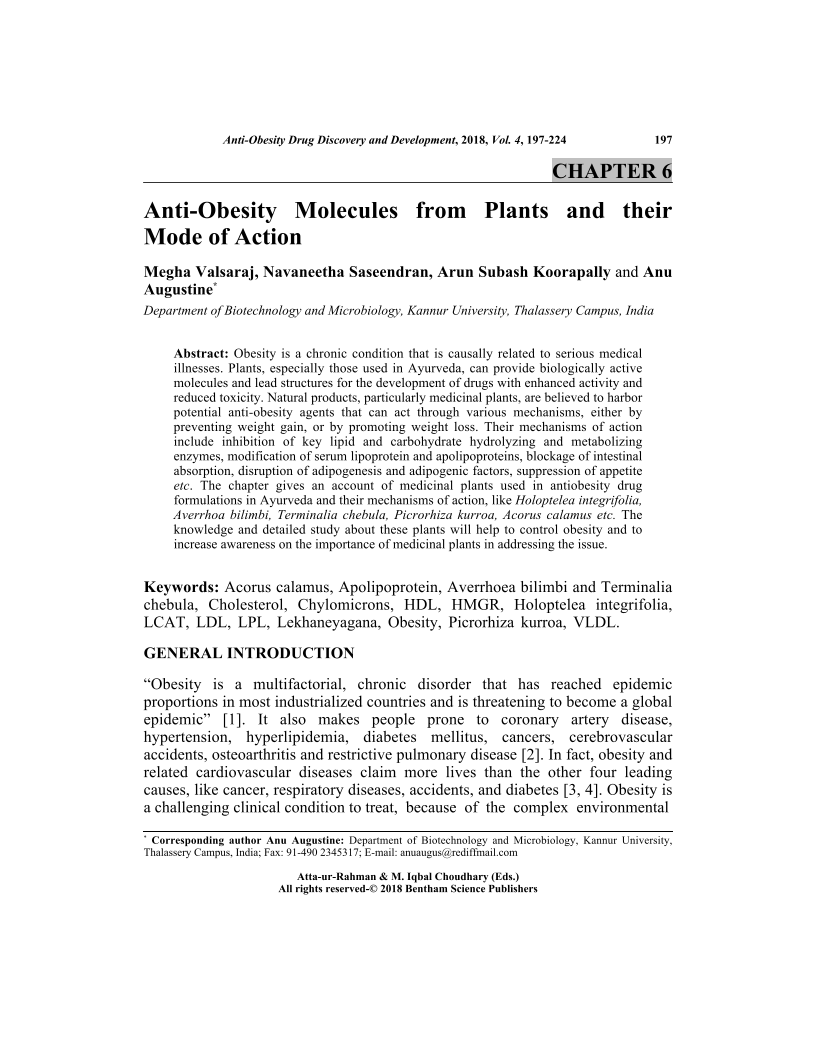Anti-Obesity Molecules from Plants and their Mode of Action

- Authors: Megha Valsaraj, Navaneetha Saseendran, Arun Subash Koorapally, Anu Augustine4
-
View Affiliations Hide Affiliations4 Department of Biotechnology and Microbiology, Kannur University, Thalassery Campus, India.
- Source: Anti-Obesity Drug Discovery and Development: Volume 4 , pp 197-224
- Publication Date: December 2018
- Language: English
Anti-Obesity Molecules from Plants and their Mode of Action, Page 1 of 1
< Previous page | Next page > /docserver/preview/fulltext/9781681085586/chapter-6-1.gif
Obesity is a chronic condition that is causally related to serious medical illnesses. Plants, especially those used in Ayurveda, can provide biologically active molecules and lead structures for the development of drugs with enhanced activity and reduced toxicity. Natural products, particularly medicinal plants, are believed to harbor potential anti-obesity agents that can act through various mechanisms, either by preventing weight gain, or by promoting weight loss. Their mechanisms of action include inhibition of key lipid and carbohydrate hydrolyzing and metabolizing enzymes, modification of serum lipoprotein and apolipoproteins, blockage of intestinal absorption, disruption of adipogenesis and adipogenic factors, suppression of appetite etc. The chapter gives an account of medicinal plants used in antiobesity drug formulations in Ayurveda and their mechanisms of action, like Holoptelea integrifolia, Averrhoa bilimbi, Terminalia chebula, Picrorhiza kurroa, Acorus calamus etc. The knowledge and detailed study about these plants will help to control obesity and to increase awareness on the importance of medicinal plants in addressing the issue.
-
From This Site
/content/books/9781681085586.chapter-6dcterms_subject,pub_keyword-contentType:Journal -contentType:Figure -contentType:Table -contentType:SupplementaryData105

